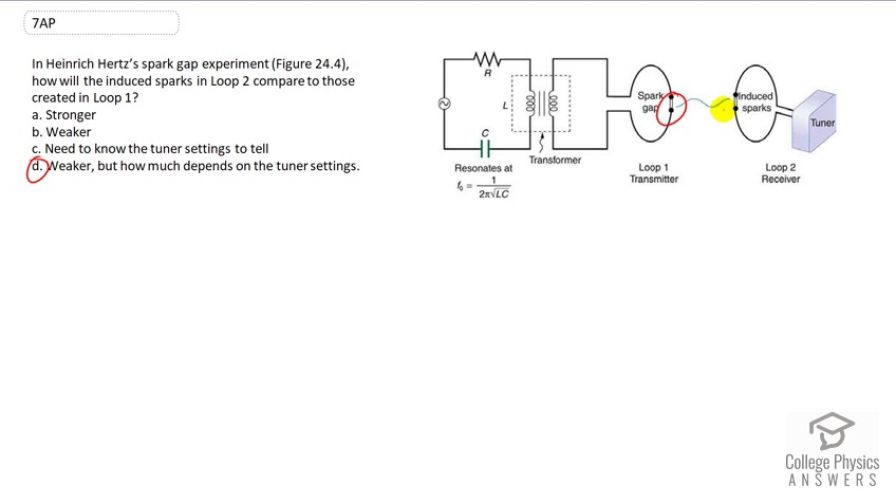Question
In Heinrich Hertz’s spark gap experiment (Figure 24.4), how will the induced sparks in Loop 2 compare to those created in Loop 1?
- Stronger
- Weaker
- Need to know the tuner settings to tell
- Weaker, but how much depends on the tuner settings.
Final Answer
(d)
Solution video
OpenStax College Physics for AP® Courses, Chapter 24, Problem 7 (Test Prep for AP® Courses)

vote with a rating of
votes with an average rating of
.
Video Transcript
This is College Physics Answers with Shaun Dychko. The intensity of the electromagnetic wave produced by this spark gap here is going to reduce with distance. So the intensity is going to be whatever power is consumed here divided by the area of the sphere at whatever distance from the transmitter we are. So here is we can imagine that this is the radius of some sphere here and the total power emitted by the spark is going to be distributed over the entire surface area of that sphere. So the intensity is that power divided by that area. And so having a lower intensity here than was emitted means that the the spark induced here will be weaker and so that gives us options B or D. Now how much weaker is affected by the circuit created by this tuner. This tuner has a variable capacitor probably, it could be variable inductor but I think it's more common to have a variable capacitor and they can tune the resonant frequency of the circuit because it has formula 1 over 2 Pi times square root LC. So if you can adjust C, you can adjust this resonant frequency. And so how much weaker depends on the tuner and so the best option here is D.